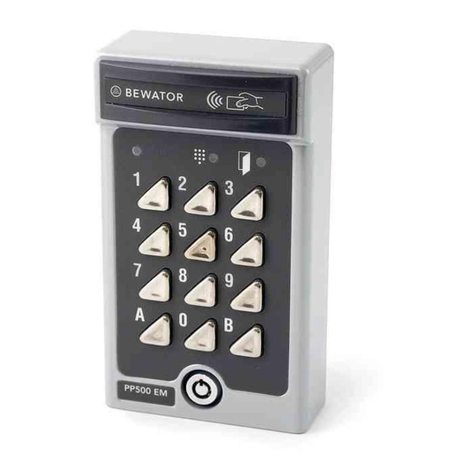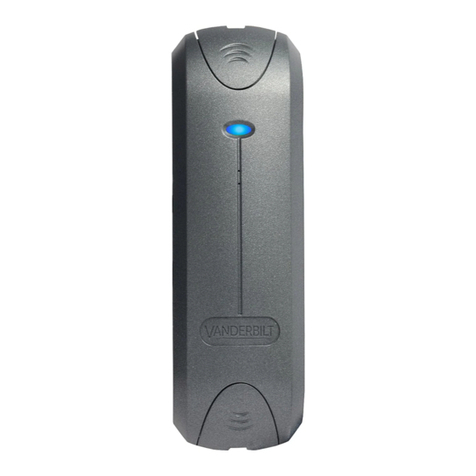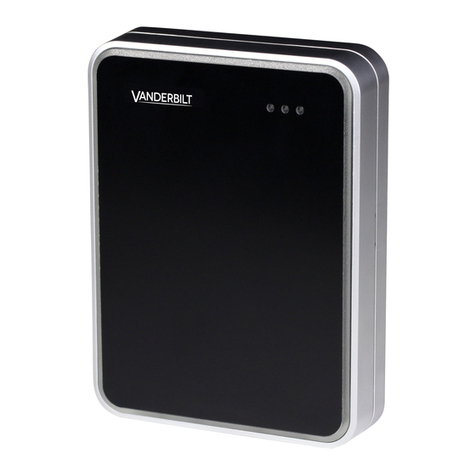
3
Vanderbilt International (IRL) Ltd.
Contents
1Safety regulations and warnings...........................................................5
2Approval...................................................................................................5
3Technical Specifications........................................................................6
3.1 Ordering data.......................................................................................6
3.2 Scope of delivery..................................................................................6
4General.....................................................................................................7
4.1 Designed Function...............................................................................7
4.2 Features...............................................................................................8
4.3 ONLINE Operation – Reader...............................................................8
4.4 Stand-alone Operation.........................................................................9
4.4.1 Users....................................................................................................9
4.4.2 ARMED and DISARMED Mode.........................................................10
4.4.3 Arming and Disarming of the Reader (re-arming)..............................10
4.4.4 Unlocking a Door................................................................................11
4.4.5 Alarms................................................................................................12
4.4.6 Acoustic and Optical Signals .............................................................13
5Installation .............................................................................................14
5.1 Opening the housing..........................................................................15
5.2 Mounting ............................................................................................15
5.3 Connecting the reader .......................................................................16
5.3.1 Ports...................................................................................................16
5.3.2 Wiegand Transmission Format..........................................................16
5.3.3 Magstripe Transmission Format ........................................................17
5.3.4 Address setting ..................................................................................17
6Programming.........................................................................................18
6.1 Setting Reader Operation Mode ........................................................19
6.1.1 Troubleshooting .................................................................................20
6.2 Define Master and Installer Cards - Memory Reset...........................21
6.2.1 Default Settings..................................................................................21
6.3 Installer Programming Mode..............................................................22
6.3.1 Configuration Default settings............................................................22
6.3.2 Configuration Example settings.........................................................23
6.3.3 List of the Installer Programming Modes ...........................................24
6.4 User Programming Mode...................................................................25
6.4.1 User Programming Commands .........................................................25
6.4.2 Programming Examples.....................................................................26
7Appendix................................................................................................27
7.1 Dimensions ........................................................................................27
7.2 Various example Connections...........................................................28
7.2.1 Reader in Stand-alone Mode - I/O Board ..........................................28
7.3 Maintenance.......................................................................................29
7.4 Disposal .............................................................................................29
7.5 List of Users.......................................................................................30































